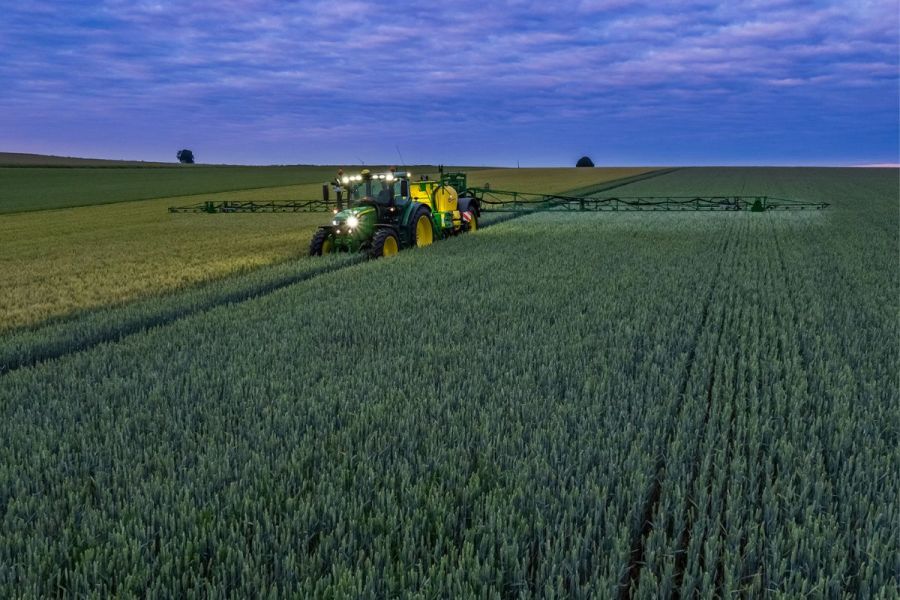Spraying technology continues to advance in an effort to help farmers optimise the use of chemistry. CPM scopes out some of the latest innovations to hit the market and others that are just around the corner.
By Melanie Jenkins
Although the role of a spray operator still requires skill and training, new innovations and technologies continue to try and improve efficiencies – from targeted spray accuracy all the way down to optimised cleaning systems. Here are some of the newest additions to the market.
Amazone
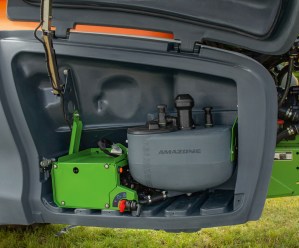
DirectInject is a new system that has been designed to be integrated into the spray circuit of Amazone’s UX01 Super sprayers.
DirectInject is a new system that has been designed to be integrated into the spray circuit of Amazone’s UX01 Super sprayers to provide the option to change tank mixes on the move. The system comes into its own where a chemical can’t be applied around headlands due to buffer zone restriction or in specific areas where there are issues with weed control, explains Simon Brown of Amazone.
“There are also situations where an increased dose rate of just one active ingredient in the tank mix is needed. For example, this system is useful where lodging can be a problem and a higher rate of a growth regulator in certain areas could be beneficial.”
Tank mixes can be altered with the addition of further plant protection products directly into the spray line while on the move. This process can be started or stopped during the application process, as and when required, says Simon.
“The biggest advantage of the technology is that DirectInject can work with undiluted plant protection products.”
The system works through the use of a mechanical agitator, which forces plant protection agents to remain homogenous even when they tend to separate, adds Simon. “A high-pressure electric pump is then used to push the neat chemical into a mixing chamber, which is activated on demand, allowing the chemical from the DirectInject tank to go to the spray nozzles.
“At this point the DUS Pro recirculation system is switched off to avoid any cross-contamination of the main spray tank. After application the valve closes so the chemical flow stops and the recirculation system recommences.”
After use, any remaining neat chemical can be drained back to canister and then the whole spray liquid circuit is washed out using the comfort clean function from the tractor seat.
According to Simon, a special feature of the system, compared with conventional direct injection systems, is the fast response time of the injection process and its complete integration into the spray circuit.
“With DirectInject, it’s possible to respond individually to the requirements of the crop in the field, reducing the usage of plant protection products, as well as the number of additional passes with the sprayer. This saves time, money and protects the environment.”
The system includes an additional 50-litre tank which has its own metering system. This has been integrated into the storage compartment of the UX01 Super so that it can be easily accessed from the ground and filled safely, explains Simon.
Fendt
Fendt’s latest additions include quicker cleaning and new nozzle bodies for its Rogator self-propelled sprayer.
Updates for 2023 include improved boom stability, electro-pneumatic nozzle bodies and a new ContiRinse system to reduce cleaning times. The new features will be available on all Rogator models – 645, 655 and 665 – with boom widths from 24m to 39m.
The newly redesigned ContiRinse system incorporates a separate clean water pump to help cut tank cleaning times. Cleaning of the spray lines containing chemical residues can begin while the operator continues spraying as part of the system’s two adjustable liquid volume thresholds. The second kicks into action close to the end of the tank load, whereby the full clean process activates as it empties.
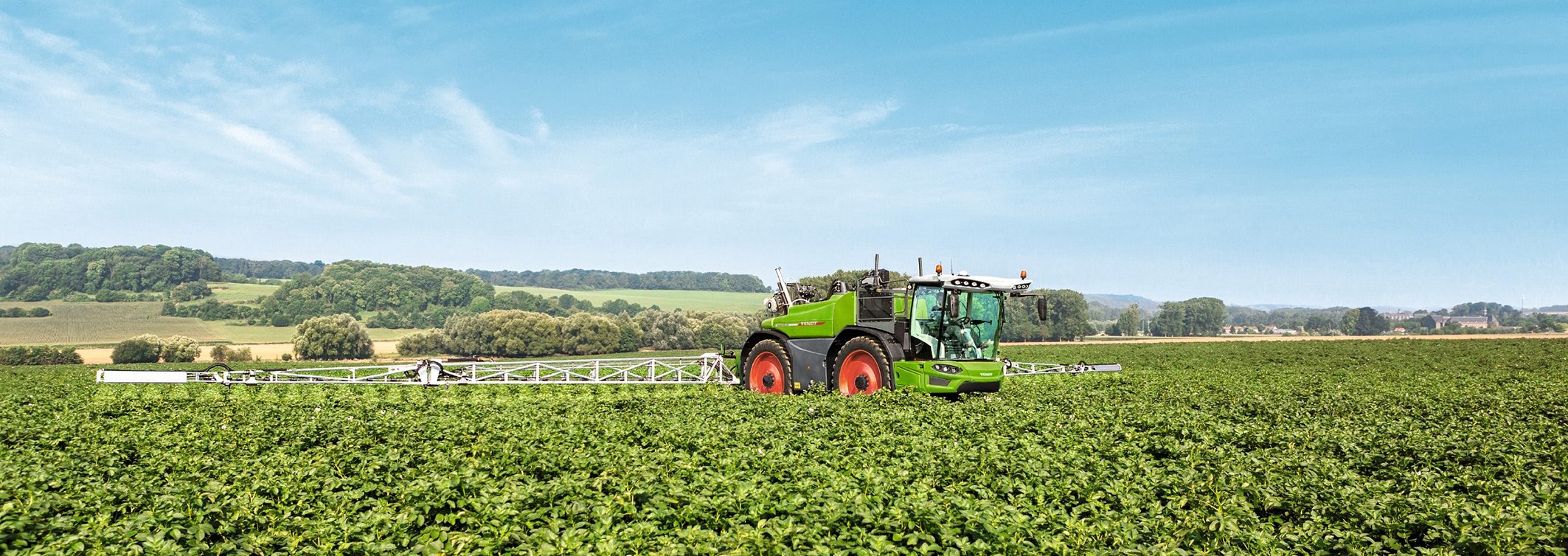
Fendt’s ContiRinse system aims to make switching between different chemicals quicker as it begins the rinsing cycle during spraying.
“ContiRinse is designed to reduce the downtime spent cleaning and rinsing the plumbing system after spraying, making it quicker to change between products and crops,” says Sam Treadgold of Fendt. “The additional clean water pump allows the pre-rinse cycle to begin while spraying and there’s now an auto pump shutoff, which switches off the main 785 l/min pump after cleaning to prevent it running dry.”
A further update means all Rogator models are now fitted with new Altek electro-pneumatic nozzle bodies as standard, which replace the fully electric Arag versions. These are compatible with Fendt’s OptiNozzle automatic nozzle selection system but also a single line Hypro five-way rotary, an Altek twin-line, and an Altek quad-line setup. The valves on the Rogator are now supplied by Banjo.
“The new nozzle bodies don’t have diaphragms and feature no dead volume areas, so liquid or chemical residues can’t sit inside the bodies after use. The electro-pneumatic design also provides increased reliability compared with our old units,” explains Sam.
And six OptiSonic height sensors aim to improve boom stability – previously there were only four – to keep the booms automatically adjusted in uneven crops, helping to increase application accuracy. The central sensor has been repositioned away from the rear axle to keep it free from debris.
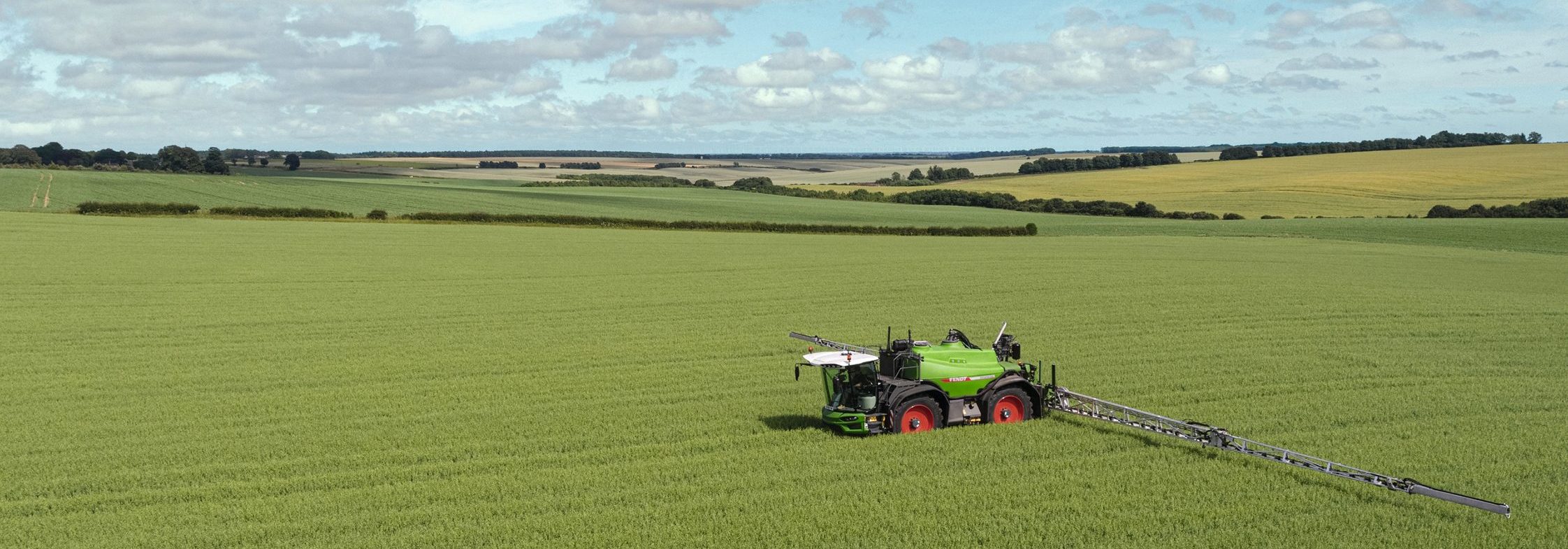
The Rogator can now have six OptiSonic boom height sensors to improve application accuracy
Improvements in the VisioCab include a fridge, an amended handsfree system with a centrally located gooseneck microphone, while stronger mirror mounts to reduce vibrations on rough terrain.
Horsch
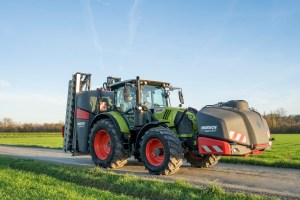
Horsch’s Leed FT is an intelligent spraying technology which is front-mounted on a three-point linkage and offers additional spraying capacity.
New from Horsch is a front-mounted spray tank – the Leeb FT. This intelligent spraying technology mounts to a tractor’s three-point linkage and offers additional spraying capacity. Available in 1200-litre and 1800-litre capacities, the Leeb 1.2 FT and 1.8 FT can provide a supplementary system to the brand’s recently launched Leeb CS rear-mounted sprayer but will work with other sprayers too. When combined with the Leeb CS, it offers up to 4000 litres of spraying capacity.
The Leeb FT uses a standard coupling triangle to allow for short set-up times and easy handling, without the need to manually couple hydraulic lines. Featuring ISOBUS control with an intuitive interface, the machine has lighting integrated in the front tank and an optional camera system for a better overview of the space in front of the machine.
The Leeb FT Basic can be used as an additional water tank with a 5cm suction line towards the rear, without agitator and cleaning. The higher specification Pro version is completely integrated into the software and the water circuit of the Leeb CS and features its own agitator and cleaning.
Grim
Looking to target the demand for small, lightweight self-propelled sprayers, Merse Agriculture began supplying Grim machines recently after Bargam discontinued its sprayer for this market segment.
“The Grim sprayer is very similar, but it’s 2t lighter at 6.5t unladen,” explains Craig Burn of Merse Agriculture. “It’s suited to contractors or farmers looking for a small, lightweight machine with heavy duty components.”
The smaller Grim Series 7 machine runs a 170hp four-cylinder Iveco engine, which can be mechanical or hydrostatic with wheel motors. It can either be fitted with steel or aluminium booms, depending on customer requirement.
“Machines can be specified by customers and then assembled in the UK,” explains Craig. “We’re purchasing the skid unit from the factory – which supplies the tractor and tank – and we fit the plumbing, pumps, boom circulation unit and sprayer controls. Each machine is completely bespoke so there’s no set operating system. We do this so that we can offer spare part components to our customers when they need it.”
A bigger machine – the Series 8 – in an intermediate size with a 3000-litre tank. This machine also operates 170hp but has a slightly upgraded transmission to cope with more loading. The larger Series 9 has a 240hp Iveco six-cylinder engine and 4000-litre tank with a 36m boom.
The machine was demonstrated by Merse Agriculture at Cereals in 2022 and was really well received, according to Craig.
It was announced earlier this year that Grim sprayers had been purchased by Milan-based investment fund, Hyle Capital Partners.
Kverneland

A new optional feature of Kverneland’s sprayer range is SpotSpray technology, which is an extension of variable rate application maps.
Kverneland has announced three new optional features to its sprayer range, comprising SpotSpray, the introduction of a 25cm nozzle spacing option, and the latest generation of Boom Guide ProActive boom height control.
SpotSpray technology is an extension of variable rate application maps, which have already been available on seed drills and fertiliser spreaders with task control. The same principle can be applied to Kverneland sprayers that are equipped with iXspray software when combined with iXflow Air/iXflow E individual nozzle control.
SpotSpray uses treatment maps that can be populated with a zero-application rate in addition to a prescribed application rate. By loading a treatment map into the control terminal, the sprayer automatically controls individual nozzles through the SpotSpray software and GPS, following only the indicated areas on the treatment map.
The new 25cm nozzle spacing option means lower boom heights can be achieved to help keep spray drift to a minimum. Operators can now work with a reduced boom height of 30cm instead of 50cm, due to the latest generation of Boom Guide ProActive ultrasonic boom control. Advanced sensor technology aims to deliver greater precision and consistent boom control at higher forward speeds.
Sam
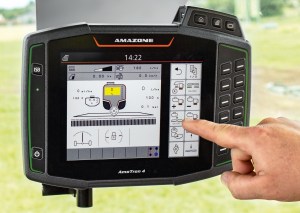
Amazone DirectInject display: Amazone’s DirectInject makes it possible to respond individually to the requirements of the crop in the field, reducing the usage of plant protection products.
Introduced at Cereals last year, Sam’s Infinity sprayers were launched as the firm’s new top-of-the-line models. Comprising two models with 5000-litre and 6000-litre capacities, the Infinity range introduces several other new design features, including a chassis with 1.2m ground clearance allowing for the accommodation of larger wheels. Despite this, a turning circle of 7.6m is still achievable and four-wheel steer can be selected at the touch of a foot pedal.
A stage five Deutz six-cylinder engine produces 242hp and a new hydrostatic transmission provides easy range changes, while traction control comes as standard. Fully independent suspension is included for comfort and track width can be adjusted from 1.8m to 2.2m.
Externally, the new spray pack features lighter steel booms of up to 40m, with a six-sensor levelling system and auto-lowering when folding up. A 40-litre induction hopper that’s part of a new side-mounted filling station includes two washing nozzles and an additional hand lance for external cleaning.
Key changes in the cab include a new armrest which incorporates all operating functions. An eco-function allows the reduction of rpm to help reduce fuel consumption.
This article was taken from the latest issue of CPM. Read the article in full here.
For more articles like this, subscribe here.
Sign up for Crop Production Magazine’s FREE e-newsletter here.

